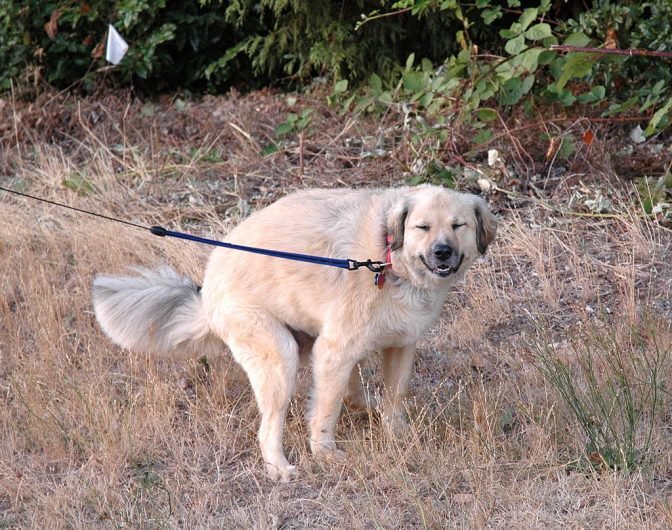Dog Diarrhea
You’re looking down at a runny mess of dog poo, and the dog is looking up at you with a sad look on his face. At some point, it’s a gross fact of life for all dog owners: your dog has diarrhea. Relax, plug your nose, and let’s take a look at what causes dog diarrhea and how to get your dog’s gut back in order.
Your dog probably has diarrhea if his poop is loose or softer than normal. According to PetMD, symptoms that indicate or accompany diarrhea include:
Accidents
Watery feces
Increased volume of poop
Blood or mucus in the poop
Straining to defecate
Change in mood
Fever, fatigue, or weakness
How does normal dog poop look? A healthy dog poop is chocolate brown, log-shaped, solid but not hard, and moist enough to squish when touched.
A lot of different issues can cause dog diarrhea:
Overeating
Eating rotten food or ingesting a harmful substance
Eating non-food items like socks or toys
A sudden change in diet
Allergies
Illness caused by a bacteria, parasites, or worms
Underlying medical conditions like cancer, colitis, or kidney and liver disease
Medications
Stress or a change in routine
If your dog has diarrhea, do a quick visual analysis before you clean up the poop. How it looks can help you or a vet figure out what might be wrong. Grey or orange dog poop might mean organ trouble. Black poop might indicate a more serious issue like internal bleeding. Poop with white bits might mean worms. Finally, watery or shapeless dog poop might mean an intestinal problem.
The big pooper-scooper question: How do you stop dog diarrhea? Thankfully, there are steps you can take to get dog diarrhea under control.
1. Put your dog on a 12-24 hour fast.
Fasting helps a dog’s digestive system rest and can allow the cause of diarrhea to clear out. Always offer your dog water, even if it is on a temporary fast from food.
2. Give your dog a probiotic.
Giving your dog a probiotic can establish healthy bacteria in the gut and could speed recovery. Probiotics can be purchased from pet stores or through your veterinarian. Try mixing probiotics into the water your dog is drinking during its fast.
3. Serve simple, bland food after diarrhea and fasting.
Finally, consider giving your dog a mix of rice, water and small amounts of protein after a bout of diarrhea. Plain boiled chicken with cooked rice or pasta and probiotics mixed in is a good option, and gradually add more protein.
When should you go to the vet for dog diarrhea? If the diarrhea is severe, bloody, or is accompanied by extreme weakness or fever, you should go to the vet to rule out more serious medical issues.
There are some easy ways to prevent dog diarrhea:
Make sure your dog can’t access food scraps or garbage.
Avoid changing your dog’s food suddenly, and make a food transition gradually.
Avoid very stressful activities.
If you have a dog, your pet is likely going to get a case of the runs at some point. With a little time and a temporary bland diet, the diarrhea will likely clear up and your dog will be up and at ’em again in no time.
